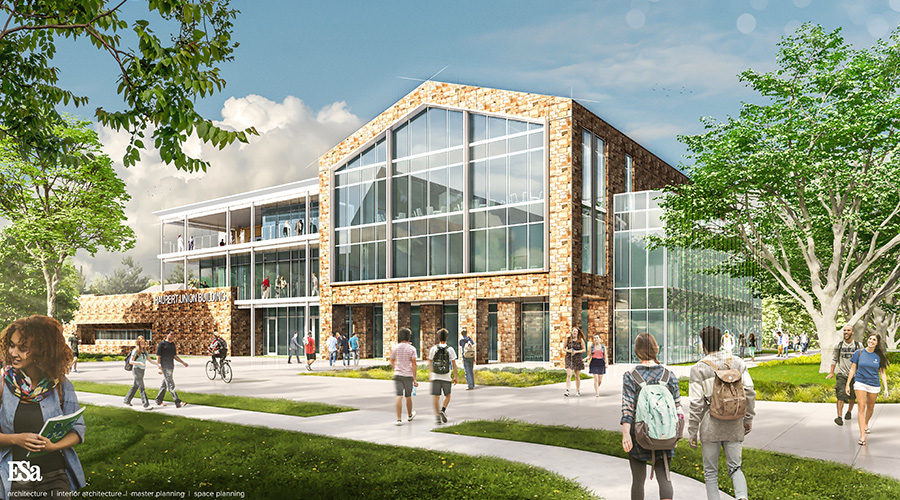High-Tech Makeovers
Aging buildings and funding issues pose challenges for managers upgrading technology in Milwaukee's K-12 schools
Not that long ago, some of the toughest challenges facing maintenance and engineering managers planning K-12 school renovations had to do with traditional issues, such as locating mechanical equipment or specifying a replacement roofing system.
Times have changed, in a very big way.
Today, most school renovations also have to incorporate an expanding array of advanced technology that is used to support both building operation and control and to enhance classroom learning.
So, in addition to specifying and integrating building-control and energy-management systems, managers must plan for the equipment and components for computer and telecommunications systems that school administrators, teachers and the public demand.
The planning process takes on an even more challenging dimension when the school in question is 50 or 100 years old. The condition of a building when it is opened up to start renovations often doesn’t match blueprints or expectations, forcing managers to revisit their plans.
Further complicating the renovation process are issues of funding for technology upgrades and the need to integrate many areas of the organization in the discussion and planning.
Given this range of challenges, planning for school renovations requires more preparation and communication than ever before
Tackling the Challenge
The Milwaukee Public Schools (MPS) is one of many districts that has faced these challenges in the last decade. The district consists of about 200 buildings, including administrative facilities and 160 schools, with about 18 million square feet of space.
As in many urban school districts, a large number of MPS facilities are older structures, some more than 100 years old. Planning technology upgrades in such facilities calls for fully understanding what such a structure will allow.
“You have challenges with how you’re going to route the systems,” says Richard Moore, director of MPS’s division of facilities and maintenance services.
Often, the framing or construction of older structures limits where workers can install wiring, cabling and ductwork. For example, the projected cost to renovate and expand the 100-year old Fratney Street School grew once planning for the project actually began.
“The structure wasn’t what we expected,” says Gina Spang, MPS’ managers of design and construction services. “There were more internal load-bearing walls than we anticipated.”
When finished in 2006, the project, with a $10 million construction price tag, will add 38,000 square feet to the school, and it will bring direct digital control to its HVAC system, along with 10 computers per classroom and the possibility of computer-driven, interactive whiteboards in classrooms, Spang says.
Defining the limits of upgrades for older buildings and outdated systems also can be difficult, given that even the most outdated HVAC equipment operates in conjunction with other equipment.
“Once you touch one part of the system, how do you determine where to stop?” Moore asks.
In the last decade, the district has upgraded its schools to bring voice, video and data service to all classrooms. In many cases, the upgrades were part of larger renovations that also included improvements in building-control technology and energy- management systems, as well as in fire and life-safety systems and accessibility improvements.
The classroom technology upgrades also included the installation of a central communications room in each school to house internet and telecommunications equipment. Creating this space in each school was not easy, especially when it came to making sure the rooms and equipment stayed cool.
“Very few of our buildings were air conditioned, so it’s always a challenge to get air conditioning to these areas,” Moore says. “It’s a lot of stuff to bring in and figure out just to get one space cooled.”
Funding for public school renovations remains an ongoing battle, given the need for taxpayer support of schools. This situation remains true even when the upgrades include new technology that directly benefits students.
“Money is tight, more now than ever, and nobody ever understands how much things cost,” Moore says.
The challenge for MPS managers in these cases involves explaining to parents and taxpayers that the cost to upgrade a school’s computer network, for example, includes more than just putting monitors in classrooms. Throw in the cost of upgrading a school’s electrical load, as well as purchasing and installing such components as wiring, cabling, hubs, routers, and file servers, and the project costs climb quickly.
Moore says the district secured funding for the projects through state sources, as well as the e-Rate program, which helps school districts fund technology upgrades.
For more on the e-Rate program, see the accompanying article on this page.
System Support
Technology upgrades can bring substantial benefits to both classrooms and maintenance departments, but they also create challenges for maintenance and engineering managers beyond installation. Specifically, managers need to make sure that building engineers and system technicians understand the technology well enough to troubleshoot and address any problems that arise.
For example, the district has updated energy management systems in many schools by tapping into local area networks.
“We had a lot of bandwidth limitations before, and that made it painfully slow to monitor or check setpoints,” says Travis Luzney, manager of maintenance and repair for MPS. The upgrades enable greater on-site monitoring and control, as well as remote monitoring via the internet for some schools.
“We provide ongoing training,” Moore says. “We don’t like getting attached to service contracts.” A full-time engineer in each building, as well as roaming technicians, receive regular training as needed to keep pace with new technology in schools.
Technology Horizon
Technology advances never stop and rarely even slow down, so like managers in many other districts, Spang is keeping a close eye on the horizon, such as the growth of wireless technology.
“We haven’t received any definitive guidelines” for specifying and installing wireless systems, Spang says. “It’s always floating out there, but there’s no definitive standard.” Future renovations and upgrades also are likely to incorporate digital cable television and cellular telephone technology, along with radio frequency identification (RFID) technology, Luzney says. RFID systems enable users to deploy tags and readers to gather data and monitor assets and equipment from remote locations.
Lessons Learned
The renovations that MPS has undertaken and completed in the last decade have helped refine some of the department’s strategies and revealed opportunities for greater efficiency in both renovation planning and execution.
“It’s important to get IT (information technology) people involved right away,” Luzney says. For example, upgrades to EMS systems included the creation of such security measures as virtual private networks to protect EMS data. Involving the district’s IT people earlier to assist with such steps would have helped speed up the renovation, he says. But the department initially hesitated to do so.
“We had a certain level of competence (with EMS technology), and we felt we could handle it because we have the day-to-day knowledge with these systems.”
Asserting the role of maintenance in the planning and execution of school renovations also is essential.
“It’s important to have maintenance involved in the planning because they have to live with what the finished structure looks like,” Spang says. “We want to be sure about the situation and condition of the existing building, knowing we’re investing this kind of money.
“And during construction, we bring in the shops to make sure they see what’s going on along the way. We want them to be comfortable that they can support the finished product.”
Perhaps most importantly, Moore advises managers taking part in the planning for renovations and technology upgrades to understand the scope of the project at hand and to seek participation and input from all interested parties, including administrators, teachers, parents and taxpayers.
This all-inclusive approach is a recognition that, now more than ever, all facility operations and activities, including renovations, are interactive.
“It’s not just the facility manager’s building anymore,” Moore says. “The more you can get other people involved in the process, the more successful the project will be.”
E-rate: A Closer Look
Securing funding for school renovations has never been easy. For decades, managers and administrators in K-12 districts have tried to convince the public to provide additional money to improve schools.
The last decade has witnessed the spread of technology in schools, but districts have additional funding opportunities for technology upgrades. States have created programs for such projects, as has the federal government. Among the largest of these is e-Rate.
The multi-billion-dollar federal program from the Federal Communications Commission — formally known as the Schools and Libraries Universal Service Support Mechanism — was created to provide discount internet and telecommunication services to schools and libraries.
Eligible schools and libraries can receive discounts of 20-90 percent on these services, internet access and internal connections necessary for deploying technology in the classroom, including hubs, routers, network file servers, wireless local area networks, and software to operate file servers.
For information on e-Rate, call (888) 203-8100 or visit www.sl.universalservice.org
— Dan Hounsell
|
Technology Resources
Managers looking for information on renovations and technology upgrades for K-12 schools can check out the resources and activities of these organizations:
— Dan Hounsell
|
Related Topics:











